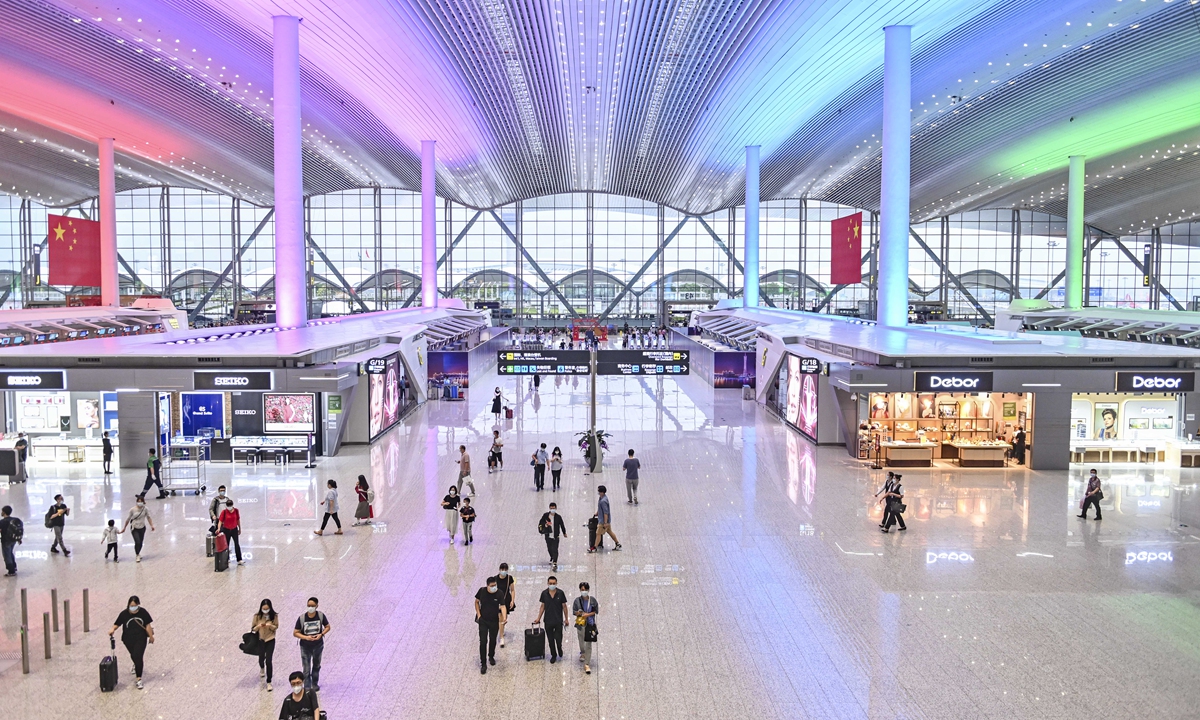
Guangzhou Baiyun International Airport on October 1, 2020 Photo: cnsphoto
China's "big three" state-owned airlines predicted losses of more than 100 billion yuan ($14.8 billion) for 2022, as a result of the epidemic, high fuel prices and depreciation of the yuan against the US dollar.
Air China on Monday predicted that the loss for 2022 would be around 37 to 39.7 billion yuan, followed by China Eastern Airlines' loss of 36 to 39 billion yuan, and China Southern Airlines' loss of 30 to 33.2 billion yuan.
It would bring the total losses for last year to at least 103 billion yuan, around 1.5 times higher than that of 2021.
Regarding the reasons for the expected loss, the three major airlines all said that the continuous impact of the epidemic brought a decline in passenger travel demand. In addition, high international oil prices and the depreciation of the yuan against the US dollar have further aggravated cost pressure.
To offset the challenges, the airlines said they are taking different measures including strict cost controls to minimize the negative impact of the epidemic.
On January 6, the Civil Aviation Administration of China (CAAC) said in a meeting that the industry will strive to recover to about 75 percent of the level before the epidemic.
The civil aviation industry has shown an upward trend this year since China optimized its COVID-19 response measures, which has brought a surge of travel demand.
Data from the CAAC showed that during the Spring Festival holidays from January 21 to 27, 9 million passengers have been transported, an increase of 79.8 percent from the Spring Festival in 2022.
The rise in outbound travel has become one of the highlights of this year's Spring Festival.
Data from information provider VariFlight showed that on January 18, the number of passenger flights on international and regional routes reached 310, the first time the number has been above 300 since May 17, 2020.
Tang Bing, an executive from China Eastern, said in January that the goal for China Eastern is to make a profit, and it is believed that driven by market demand, the international and regional route markets will witness steady growth, thepaper.cn reported on Monday.
The recovery will take time, but it is expected that the recovery in Asia-Pacific routes will be significantly higher than for intercontinental routes, Tang said, adding that the amount of passengers on international routes this year is expected to reach 50 to 60 percent of that in 2019.
Global Times




